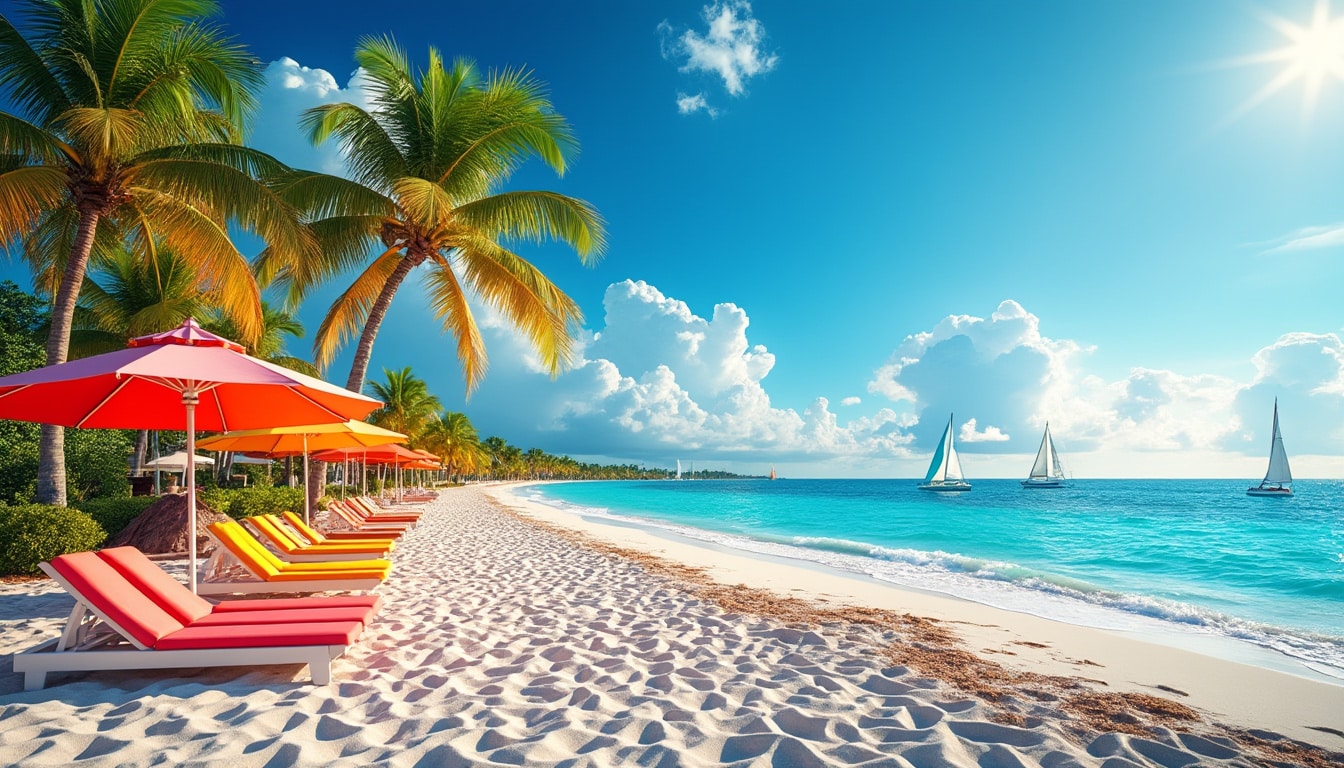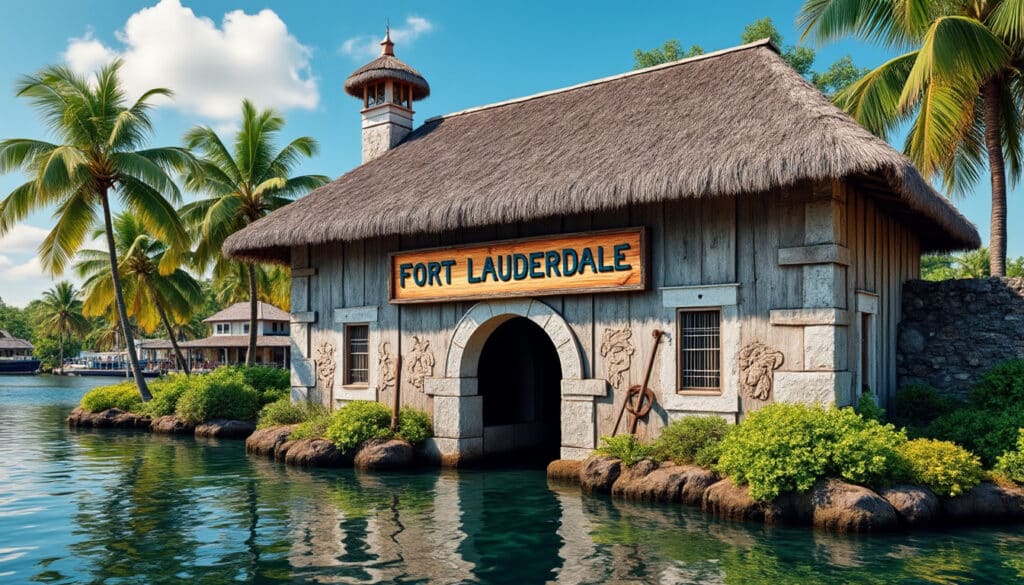Fort Lauderdale, a sun-drenched paradise in Florida, is famed for its picturesque beaches, intricate canal system, and ultimate vacation allure. Understanding the climate and weather patterns of this coastal city is essential for travelers and residents alike. Knowledge of the typical temperatures, precipitation, and seasonal changes can enhance the experience of exploring everything from its vibrant culture to its natural beauty.
Understanding Fort Lauderdale’s Annual Climate
Fort Lauderdale, with its characteristic tropical rainforest climate, is blessed with year-round warmth and high humidity levels. Situated by the Atlantic Ocean, the city experiences a significant maritime influence, ensuring its weather remains moderate. This strategically located city rarely sees temperature extremes, making it an ideal destination for tourists throughout the year.
One distinguishing feature of Fort Lauderdale’s climate is its high temperatures. Throughout the year, the temperature frequently soars past 70°F (21°C). The city’s hottest month, August, typically sees average highs of around 91°F (33°C), while January, the coldest month, only dips to an average low of 58°F (14°C).
It’s worth noting that Fort Lauderdale’s temperature variations do not only rely on daily heat. Another factor, the humidity level, which averages 71%, significantly impacts the perceived temperature. The dew point, often above 20°C, contributes to the warm and humid feel. Despite the heat, fortuitous breeze currents provide a respite, thanks especially to the Atlantic Ocean’s consistent wind patterns averaging around 25 km/h.
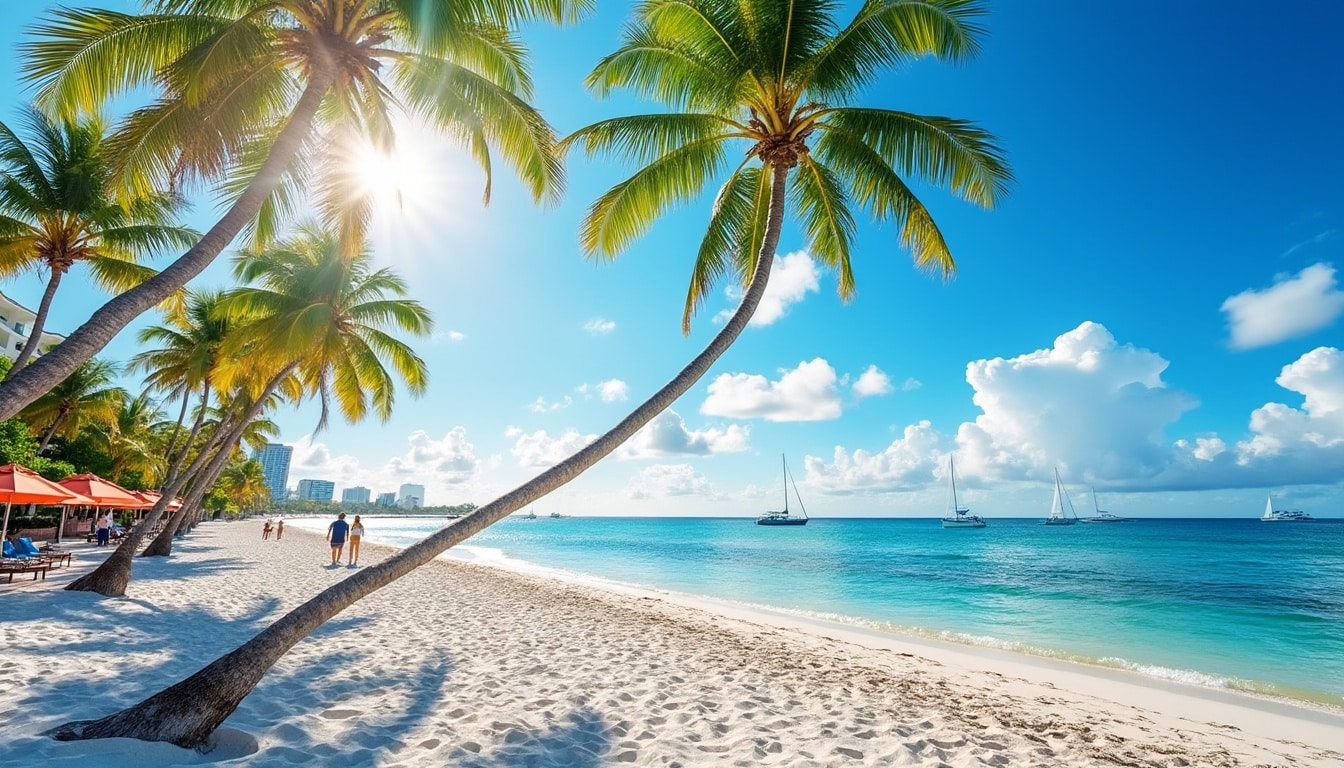
Rainfall and Seasonal Variations
Rainfall in Fort Lauderdale is abundant, particularly during the wet season from May to October. The city receives an annual average precipitation of approximately 1287.6 mm, with June being the wettest month, witnessing about 189.8 mm of rainfall. Conversely, the dry season spans from November to April, providing optimal conditions for outdoor activities.
- 🌧️ Months with highest rainfall: June, August, and September
- 🌞 Drier months: December, January, and February
- 💨 Windiest month: April with an average wind speed of 29 km/h
The combination of increased rainfall and humidity in the wetter months can sometimes lead to brief thunderstorms, a common occurrence in tropical climates. However, these are typically short-lived, allowing for plenty of sunshine throughout the day.
For anyone planning to visit or move to Fort Lauderdale, it’s beneficial to keep an eye on weather platforms like AccuWeather, Weather Underground, and the National Weather Service for real-time forecasts and updates.
Monthly Breakdown of Fort Lauderdale’s Weather Conditions
Investigating Fort Lauderdale’s weather trends month by month reveals intriguing details about its climate. Though humidity is persistent, certain months vary between wetter and drier spells, influencing activities and events in the city.
Winter and Early Spring Months
January ushers in the year with cooler temperatures ranging from 24°C during the day to 14°C at night. While precipitation remains moderate with around 50.7 mm, these months offer comfortable weather for beach outings or exploring the city’s cultural landmarks, like its renowned museums and theaters. February and March gradually warm up, enhancing outdoor festivities.
| Month | Average High (°C) | Average Low (°C) | Precipitation (mm) |
|---|---|---|---|
| January | 24 | 14 | 50.7 |
| February | 25 | 16 | 52.6 |
| March | 26 | 17 | 45.2 |
Residents and tourists can luxuriate in milder conditions, partaking in myriad activities from yachting on the city’s canals to enjoying outdoor restaurants and cafes.
Summer and Late Fall Weather
Summers in Fort Lauderdale, stretching from May to September, are characterized by higher temperatures and increased rainfall. They present a stark contrast to the drier winter months, yet this season holds its charm for those drawn to the lushness and vibrancy brought by frequent showers.
- 🔥 Hot days often exceed 90°F (32°C), particularly in July and August
- ⛈️ Frequent afternoon thunderstorms providing short bursts of rain
- 🍃 Refreshing sea breezes relieve the summer swelter
| Month | Average High (°C) | Average Low (°C) | Precipitation (mm) |
|---|---|---|---|
| July | 32 | 25 | 135.2 |
| August | 33 | 25 | 155.8 |
| September | 32 | 24 | 183.6 |
The Role of Oceanic Influence on Fort Lauderdale’s Weather
The Atlantic Ocean plays a pivotal role in shaping Fort Lauderdale’s climate, providing a moderating influence that tempers extreme temperatures. This creates a consistently warm environment that many find appealing. The proximity to the ocean ensures that temperature extremes are rare, with cool sea breezes tempering the intense heat experienced during summer.
Due to this proximity, Fort Lauderdale enjoys a longer beach season compared to many other U.S. coastal cities. 🌊 Water activities such as surfing, diving, and boating thrive year-round, thanks to warm sea temperatures ranging between 23.4°C (74.2°F) and 33°C (91°F) depending on the month.
- 🚤 Thriving boating culture leveraging extensive canal systems
- 🏖️ Popular beach destination celebrating vibrant marine life
It is also essential to consider that hurricanes, albeit infrequent, can occur from June to November, primarily driven by oceanic currents. As such, staying informed through agencies like the NOAA and The Weather Network is crucial for preparation.
Weather Tools and Resources for Fort Lauderdale Visitors
For those planning travel or residing in Fort Lauderdale, utilizing reliable weather resources ensures an enriched experience. Through tools provided by The Weather Channel, MeteoTrend, and Weather Underground, visitors can receive accurate forecasts and weather updates.
- 📱 AccuWeather App for real-time weather conditions
- 🌐 Wunderground website for historical climate data
- 🌧️ National Weather Service for updates on tropical storms
Resources such as these not only support daily plans but can improve safety during unexpected weather events. This is especially true for navigating the local tips for tourists and activities apart from the usual beach outings.
Consistent access to these tools aids in optimizing one’s time spent in Fort Lauderdale, ensuring a smooth and memorable experience amidst nature’s dynamic canvas.
FAQ about Climate & Weather in Fort Lauderdale
Below are some frequently asked questions about Fort Lauderdale’s climate and weather:
- What is the best time to visit Fort Lauderdale? The ideal time to visit is during the dry season from November to April when the weather is pleasant and rainfall is low.
- Does Fort Lauderdale experience hurricanes frequently? While the hurricane season runs from June to November, Fort Lauderdale does not frequently experience direct hits, but it’s important to stay informed during these months.
- How does the humidity in Fort Lauderdale affect outdoor activities? High humidity can make temperatures feel warmer, but it generally does not deter outdoor activities, thanks to the cooling effect of afternoon sea breezes.
- Are there any months with extreme temperatures in Fort Lauderdale? Fort Lauderdale usually does not experience extreme temperatures, as the ocean moderates the heat. The hottest months, July and August, are quite manageable with proper hydration and sun protection.
- What precautions should be taken during the wet season? It is advisable to carry umbrellas or rain jackets and check weather updates regularly during the wet season to avoid getting caught in sudden showers.
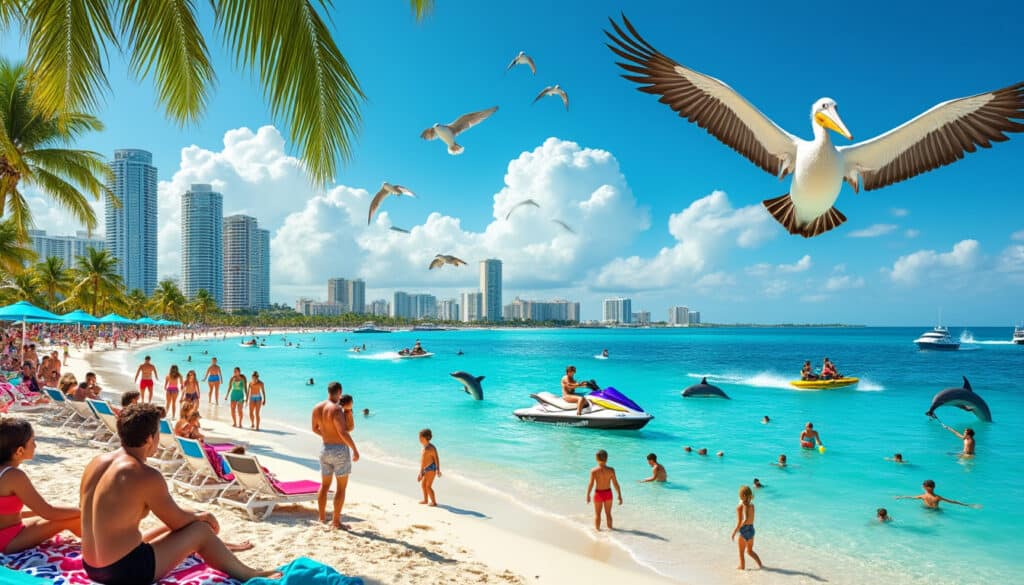
Fun Facts & Curiosities About Fort Lauderdale
Fort Lauderdale, a striking city in sunny Florida, has become a captivating destination for countless visitors worldwide. Known for its sparkling beaches, intricate canals, and vibrant culture, it offers more than just traditional tourist attractions. With fascinating history, an array…

Architecture and urban features of Fort Lauderdale
Often referred to as the “Venice of America,” Fort Lauderdale, Florida is a destination that seamlessly blends history, innovation, and scenic beauty. This vibrant city is renowned for its extensive canal networks, pristine beaches, and an eclectic architectural landscape. On…
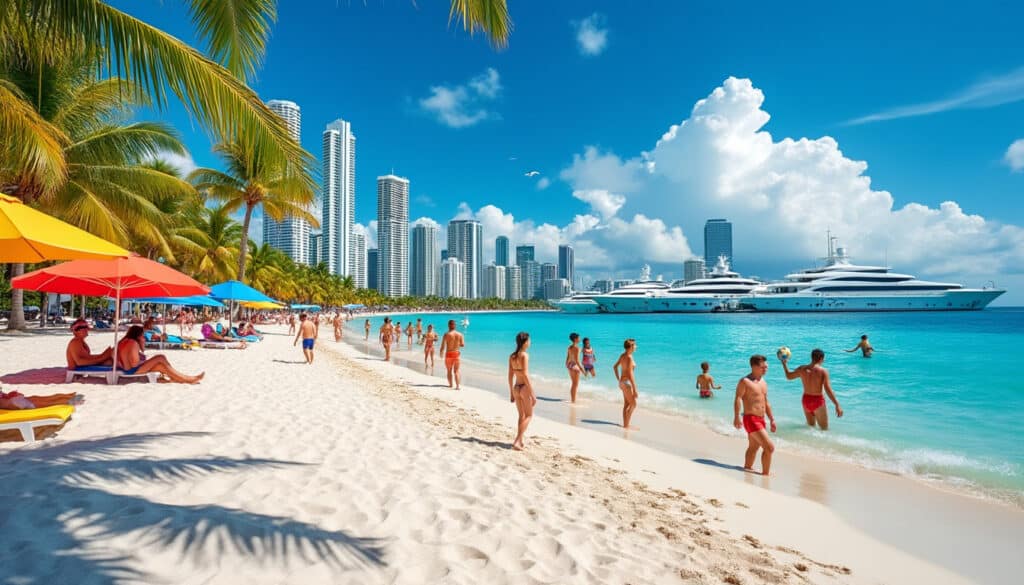
Basic facts about Fort Lauderdale
Fort Lauderdale, known as the “Venice of America,” is a vibrant city set against the picturesque backdrop of Florida’s Atlantic coastline. It is a bustling hub that features a unique blend of stunning beaches, a complex network of canals, and…

Nestled along the southeastern coast of Florida, Fort Lauderdale is a city that paints a vivid picture of sun-drenched beaches, canal-laden waters akin to Venice, and a lifestyle that intertwines with both leisure and purpose. Known for its stunning coastline,…
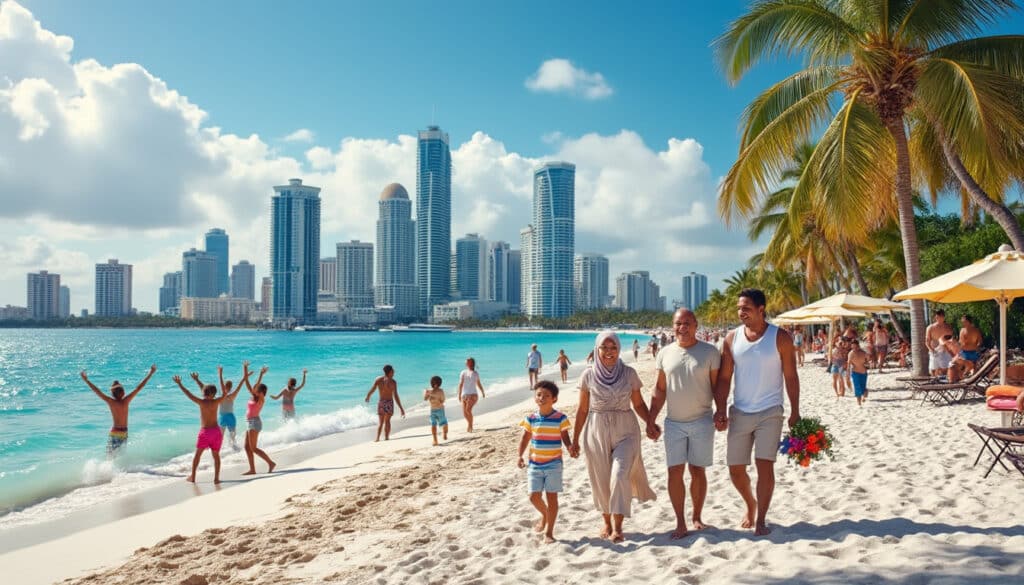
Demographics and geography of Fort Lauderdale
Fort Lauderdale, known as the “Venice of America” for its expansive and intricate canal system, offers a rich tapestry of demographics and geographical allure. This coastal gem, with its pristine beaches and vibrant cultural scene, attracts visitors and residents alike.…

Holidays and celebrations in Fort Lauderdale
In the Sunshine State, Greater Fort Lauderdale shines brilliantly during the holiday season, offering an enticing fusion of tradition, culture, and modern flair. Whether seeking holiday lights along Las Olas or enjoying beachfront festivities, this area provides a wealth of…

Language and spelling of Fort Lauderdale
Nestled along the sun-drenched shorelines of Florida, Fort Lauderdale stands as a vibrant hub of culture, tourism, and maritime allure. Renowned for its sprawling beaches and dynamic urban life, this coastal gem offers a plethora of intriguing elements to explore,…
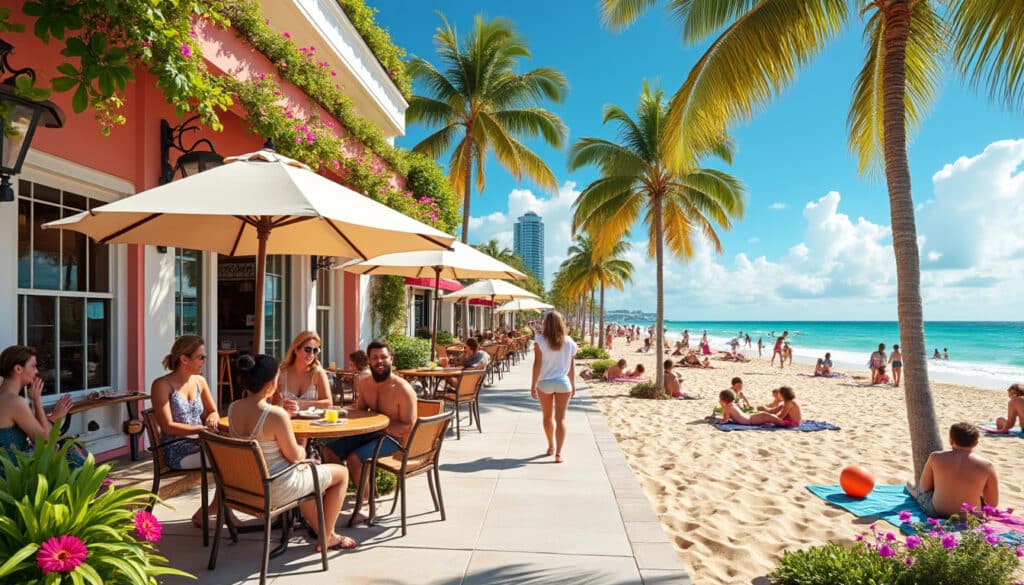
Local tips for tourists in Fort Lauderdale
Fort Lauderdale, often referred to as the “Venice of America,” is a vibrant hub for tourists seeking sun, sand, and a touch of culture. Nestled on Florida’s southeastern coast, this city offers a plethora of activities tailored for both beach…

Names, flags, and identity of Fort Lauderdale
Renowned for its beautiful coastlines and vibrant yachting scene, Fort Lauderdale’s name is steeped in a rich history that combines military feats, cultural evolution, and natural beauty. Nestled in sunny Florida, this city has grown from a strategic military fort…
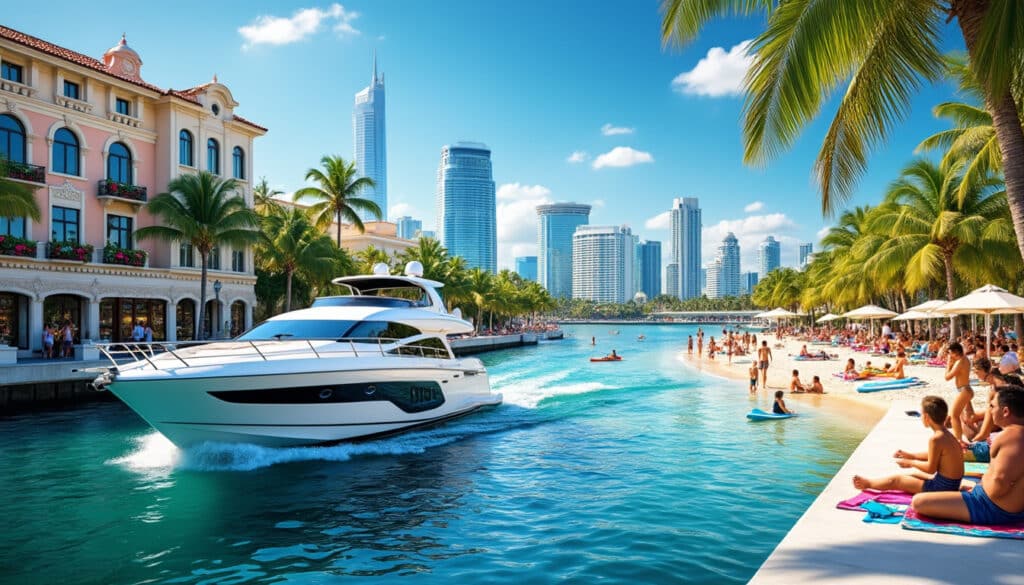
Reputation and identity of Fort Lauderdale
Fort Lauderdale, often overshadowed by its flashy neighbor Miami, possesses its own unique blend of characteristics that contribute to its reputation and identity. Known as the “Venice of America,” this enchanting city is home to an extensive network of canals,…

Time and time zone in Fort Lauderdale
🌴 Known for its beautiful beaches and bustling culture, Fort Lauderdale offers more than just scenic views. A hub of diverse experiences, it’s a place where time gains a unique dimension. From the daily rhythm determined by its Eastern Time…

Unusual facts and social issues in Fort Lauderdale
Fort Lauderdale, often recognized for its sun-kissed beaches and vibrant nightlife, harbors an array of unusual facts and social intricacies that paint a more complex picture of this coastal city. Known as the “Venice of America” due to its vast…
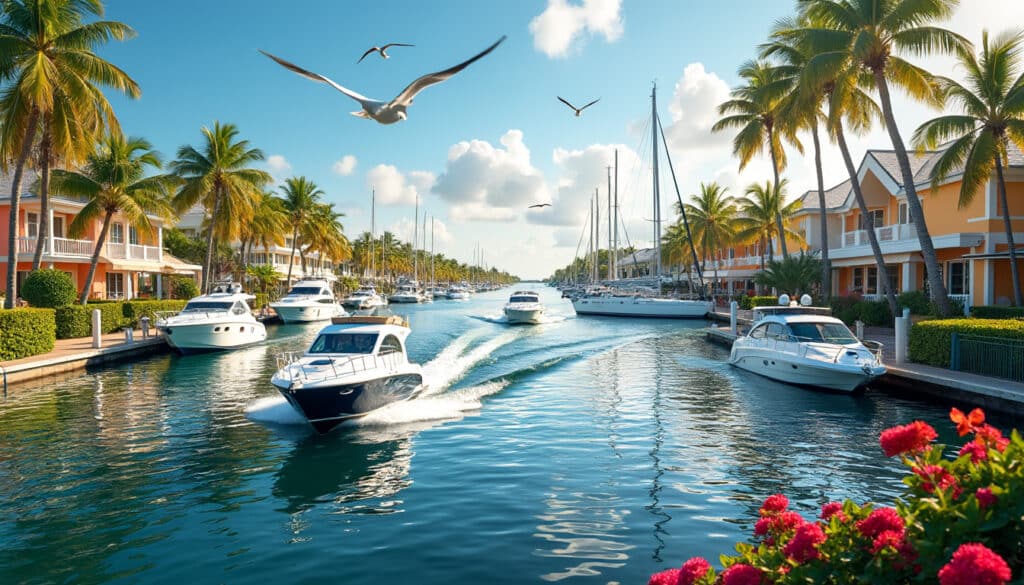
What does Fort Lauderdale look, smell, feel like?
Exploring the vibrant city of Fort Lauderdale can be a multi-sensory adventure with its stunning waterways, bustling arts scene, and culinary delights that offer an immersive experience for locals and tourists alike. Known for its nickname, the “Venice of America,”…

